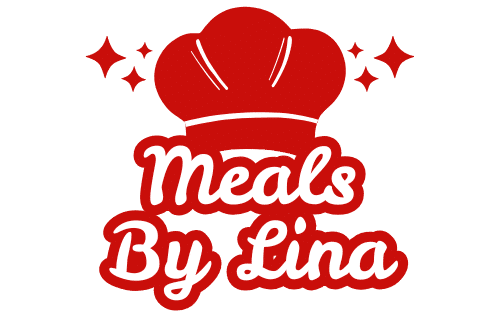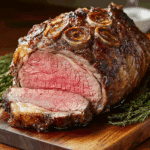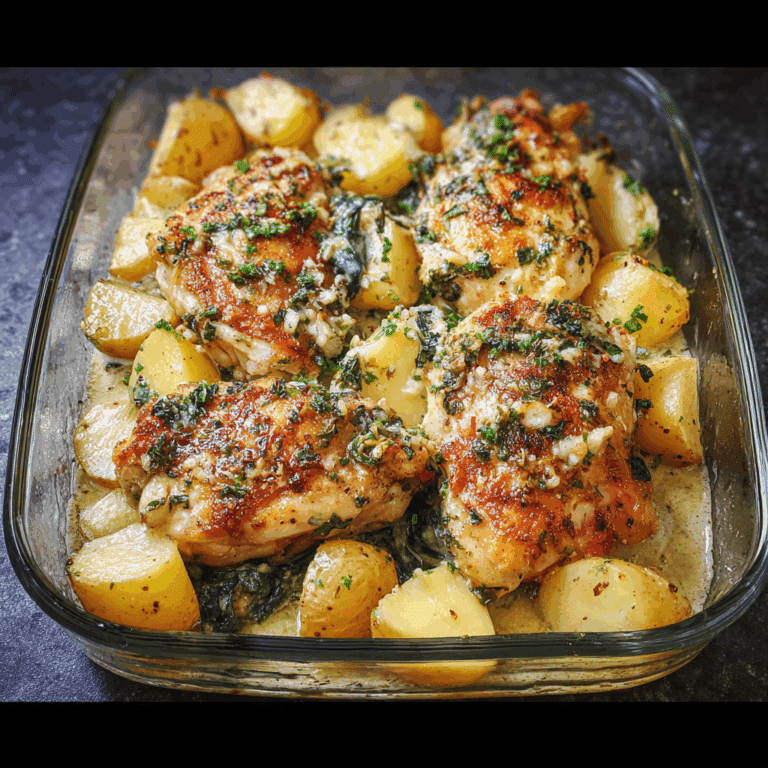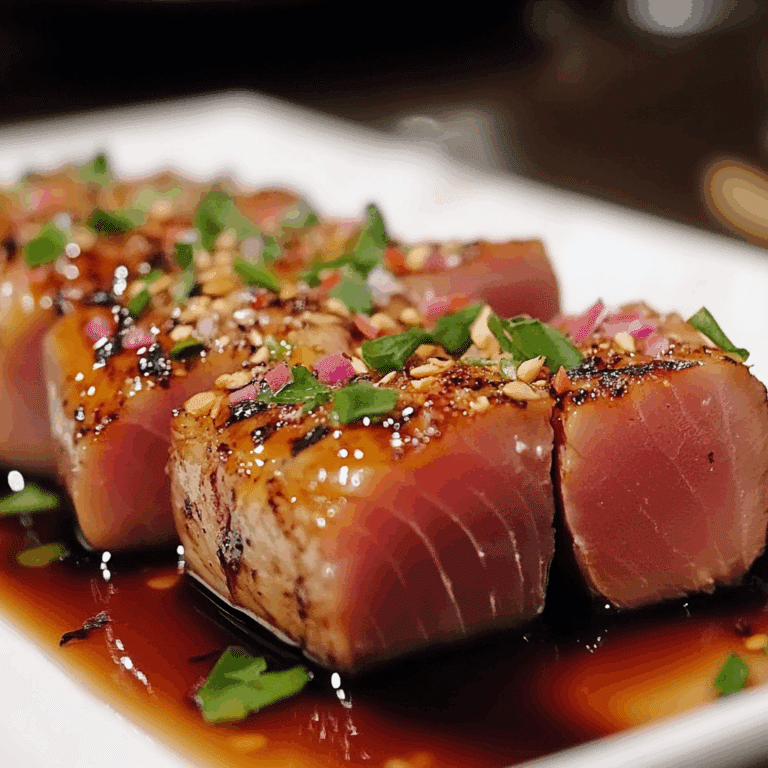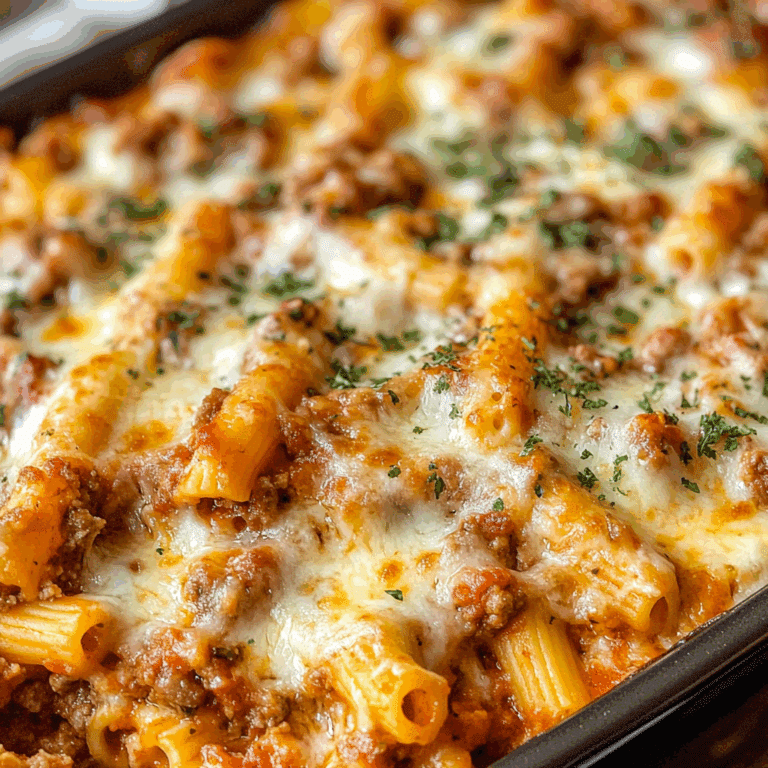How to Cook the Perfect Prime Rib Easily
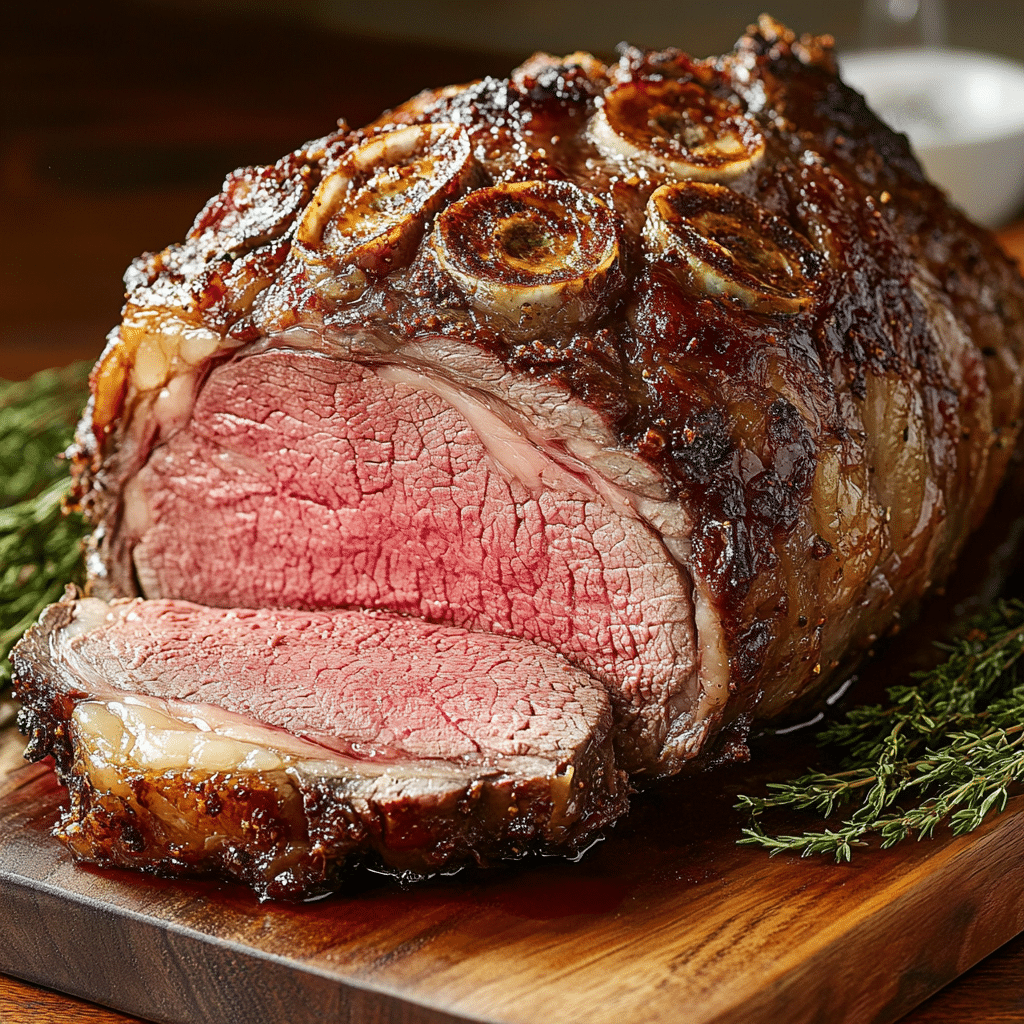
If you’ve ever dreamed of cooking a juicy, tender, and flavorful roast that leaves everyone at the table asking for seconds, then this is your guide. The Perfect Prime Rib is the ultimate showstopper, combining simple ingredients and straightforward steps to deliver an unforgettable meal. Whether it’s a holiday feast or a special dinner, learning how to make prime rib perfectly will impress your guests and satisfy your cravings every single time.
Why You’ll Love This Recipe
- Effortless elegance: Minimal prep with maximum wow-factor presentation guarantees a stress-free cooking experience.
- Consistent results: Follow these easy steps for juicy, tender prime rib roast every single time, no guesswork needed.
- Flavor-packed: Simple seasoning lets the rich beef flavor shine through with a savory crust that’s pure perfection.
- Versatile centerpiece: Perfect for holidays, dinner parties, or anytime you want to impress without fuss.
- Room for creativity: Easily customize with herbs, spices, or marinades to fit your taste preferences.
Ingredients You’ll Need
This recipe shines because it uses a few essential, high-quality ingredients that enhance the natural essence of the beef. Each adds just the right touch to create the ideal crust, tenderness, and flavor balance you want in the Perfect Prime Rib.
- Prime rib roast: Choose a well-marbled cut, ideally bone-in, for juicy flavor and beautiful presentation.
- Coarse kosher salt: Essential for seasoning deeply and creating that sought-after crust.
- Freshly ground black pepper: Adds just enough mild heat and aroma to compliment the beef.
- Garlic cloves: Fresh garlic infuses subtle savory undertones enhancing every bite.
- Fresh herbs (rosemary, thyme): Classic rosemary and thyme bring earthy, fragrant notes that elevate the roast.
- Olive oil or softened butter: Helps form the perfect crust while keeping the meat moist and flavorful.
Variations for Perfect Prime Rib
One of the best things about the Perfect Prime Rib is how easy it is to customize. Whether you want to experiment with spices, adjust for dietary needs, or add a twist of international flair, there’s room for creativity while keeping the base technique intact.
- Herbes de Provence twist: Swap rosemary and thyme for herbes de Provence for a touch of French countryside flavor.
- Spicy crust: Add smoked paprika, cayenne, or chili powder for a kick that wakes up your taste buds.
- Garlic and horseradish rub: Incorporate horseradish powder with garlic for bold heat and classic steakhouse flavor.
- Low-sodium option: Use less salt and fresh lemon zest to brighten flavor without overwhelming sodium content.
- Herb butter finish: After resting, spread compound herb butter over slices for indulgent richness.

How to Make Perfect Prime Rib
Step 1: Preparing the Roast
Begin by removing the prime rib from the refrigerator about an hour before cooking to bring it to room temperature. This helps it cook more evenly. Pat it dry with paper towels, then gently rub olive oil or softened butter all over the surface.
Step 2: Seasoning Generously
Coarse kosher salt and freshly ground black pepper are your best friends here. Sprinkle liberally across the roast. Add finely chopped garlic and fresh herbs, pressing them into the meat to infuse flavor. Don’t be shy–this seasoning creates the signature crust.
Step 3: Bringing on the Heat
Preheat your oven to 450°F (230°C). Place the prime rib fat-side up on a roasting rack inside a pan to allow air circulation and even cooking. Roast the beef for 20 minutes to develop a golden-brown crust.
Step 4: Low and Slow Roasting
After the initial searing, reduce the oven temperature to 325°F (160°C) and continue roasting. The goal here is a slow, steady cook so the inside remains juicy and tender—aim for an internal temperature of 120-125°F for rare, or 130-135°F for medium rare.
Step 5: Resting Time
This is an essential step you cannot skip. Remove the roast from the oven, tent it loosely with foil, and let it rest for 20-30 minutes. Resting allows juices to redistribute, ensuring every slice stays moist and flavorful.
Step 6: Carving and Serving
Using a sharp carving knife, slice against the grain to your preferred thickness. Serve immediately to enjoy the full depth of tender, juicy beef with its flavorful crust.
Pro Tips for Making Perfect Prime Rib
- Room temperature meat: Bring the prime rib to room temperature before roasting for even cooking and perfect doneness.
- Use a meat thermometer: Check internal temperature regularly to avoid overcooking; target temperature is key.
- Rest before carving: Always let the roast rest to lock in juices and avoid dryness.
- Dry surface is important: Pat the roast dry before seasoning to help the crust develop properly.
- Bone-in vs boneless: Bone-in roasts retain moisture better and add flavor but require a bit more attention when carving.
How to Serve Perfect Prime Rib
Garnishes
Fresh herbs like rosemary and thyme or a sprinkling of flaky sea salt on top of the sliced meat highlight the roast’s natural flavors beautifully. Horseradish sauce pairs wonderfully for added zing and creaminess.
Side Dishes
Classic sides like creamy mashed potatoes, roasted root vegetables, or a crisp green salad complement the rich prime rib perfectly. Yorkshire pudding is a traditional companion that elevates the experience to a hearty celebration.
Creative Ways to Present
Serve slices elegantly fanned on a warmed platter, layered with roasted garlic cloves and drizzled with pan juices or a red wine reduction. Adding edible flowers or microgreens creates a stunning visual pop for special occasions.
Make Ahead and Storage
Storing Leftovers
Wrap leftover prime rib tightly in plastic wrap or foil, then place in an airtight container in the refrigerator. It’s best enjoyed within 3 to 4 days to maintain flavor and texture.
Freezing
For longer storage, slice the roast and freeze portions in resealable bags with as much air removed as possible. Frozen prime rib retains quality well for up to 3 months.
Reheating
To reheat without drying out, warm slices gently in a low-temperature oven (about 250°F) wrapped in foil, or quickly in a covered skillet with a splash of beef broth.
FAQs
What cut of beef is best for prime rib?
The best cut is a well-marbled bone-in rib roast, often called standing rib roast. The marbling gives it the juiciness and flavor that make prime rib special.
How do I know when my prime rib is done?
Using a meat thermometer is crucial. For rare, aim for an internal temperature of 120-125°F; for medium rare, 130-135°F. Always rest the meat after taking it out of the oven.
Can I cook prime rib without a roasting rack?
Yes, but using a rack promotes even heat circulation and prevents the roast from sitting in its juices, which helps form a crispy crust.
Should I cover the prime rib while roasting?
No, it’s best to roast uncovered to allow the heat to form the beautiful crust. Tent with foil only after cooking during the resting stage.
How long does prime rib need to rest before carving?
Rest the roast for at least 20 to 30 minutes. This resting period lets the juices settle, making each slice tender and juicy.
Final Thoughts
Mastering the art of the Perfect Prime Rib is truly a kitchen victory. With simple ingredients, a little patience, and these foolproof steps, you’ll create a feast that brings warmth, joy, and admiration at the table. So go ahead, gather your ingredients, fire up your oven, and enjoy the delicious rewards of your own perfect prime rib roast. Your friends and family will thank you!
Related Posts
- How to Perfect Swordfish Steaks With Peppercorn Butter
- Easy Simple One-Skillet Chicken Alfredo Pasta Recipe
- Why Caramelized Onion Pasta Is a Must-Try Recipe
Perfect Prime Rib
This Perfect Prime Rib recipe delivers a juicy, tender, and flavorful roast that impresses every time. With minimal prep and simple, high-quality ingredients, it creates a savory crust and rich beef flavor, making it the ideal centerpiece for holidays, dinner parties, or special occasions.
- Prep Time: 1 hour
- Cook Time: 1 hour 30 minutes
- Total Time: 2 hours 30 minutes
- Yield: 8 servings
- Category: Main Course
- Method: Baking
- Cuisine: American
- Diet: Gluten Free
Ingredients
Prime Rib Roast
- Prime rib roast (well-marbled, bone-in, about 4-6 pounds)
Seasonings
- Coarse kosher salt (to taste, approximately 2-3 tablespoons)
- Freshly ground black pepper (to taste, approximately 1-2 tablespoons)
- Garlic cloves (4-6, finely chopped or minced)
- Fresh herbs: rosemary and thyme (2-3 sprigs each, chopped)
Fat for Crusting
- Olive oil or softened butter (2-3 tablespoons)
Instructions
- Preparing the Roast: Remove the prime rib from the refrigerator about an hour before cooking to bring it to room temperature. This helps it cook more evenly. Pat it dry with paper towels, then gently rub olive oil or softened butter all over the surface.
- Seasoning Generously: Sprinkle coarse kosher salt and freshly ground black pepper liberally across the roast. Add finely chopped garlic and fresh herbs, pressing them into the meat to infuse flavor, creating a signature crust.
- Bringing on the Heat: Preheat your oven to 450°F (230°C). Place the prime rib fat-side up on a roasting rack inside a pan to allow air circulation and even cooking. Roast the beef for 20 minutes to develop a golden-brown crust.
- Low and Slow Roasting: After the initial searing, reduce the oven temperature to 325°F (160°C) and continue roasting. Aim for an internal temperature of 120-125°F for rare or 130-135°F for medium rare. Use a meat thermometer to monitor doneness.
- Resting Time: Remove the roast from the oven, tent it loosely with foil, and let it rest for 20-30 minutes. Resting allows juices to redistribute, ensuring every slice stays moist and flavorful.
- Carving and Serving: Using a sharp carving knife, slice against the grain to your preferred thickness. Serve immediately to enjoy the full depth of tender, juicy beef with its flavorful crust.
Notes
- Bring the prime rib to room temperature before roasting for even cooking and perfect doneness.
- Use a meat thermometer to check the internal temperature regularly and avoid overcooking.
- Always let the roast rest to lock in juices and avoid dryness.
- Pat the roast dry before seasoning to help the crust develop properly.
- Bone-in roasts retain moisture better and add flavor but require more attention when carving.
Nutrition
- Serving Size: 4 oz
- Calories: 450
- Sugar: 0g
- Sodium: 500mg
- Fat: 35g
- Saturated Fat: 15g
- Unsaturated Fat: 18g
- Trans Fat: 0g
- Carbohydrates: 0g
- Fiber: 0g
- Protein: 35g
- Cholesterol: 120mg
Keywords: prime rib, roast beef, holiday roast, rib roast, beef roast, holiday dinner, main course
